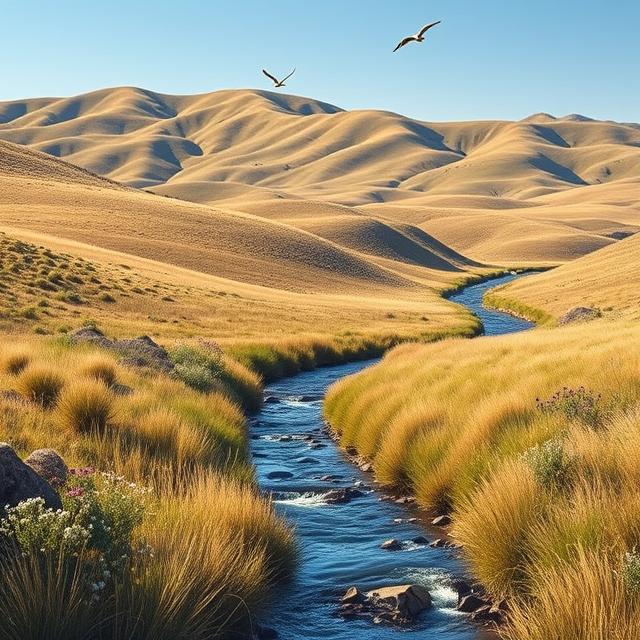Nestled in a setting where natural beauty meets human settlement, the Ridges at Sand Creek represents more than just a geographical location. It is a place where ridgelines and flowing waters combine to create a landscape that has historically supported wildlife, inspired stories, and attracted communities seeking harmony with their surroundings. While the phrase “Ridges at Sand Creek” may sound simple, it embodies a mixture of natural heritage, cultural history, and ecological importance.
This article explores the meaning and significance of the Ridges at Sand Creek from multiple angles: geography, ecology, history, and community relevance. It also answers common questions that help readers understand its broader importance.
Table of Contents
1. The Geographical Context
The ridges surrounding Sand Creek form a series of elevated landforms shaped over thousands of years through erosion, sediment deposits, and the slow carving action of wind and water. These ridges often provide vantage points overlooking valleys, grasslands, and, of course, the meandering Sand Creek.
Sand Creek itself—depending on its location—may refer to multiple waterways across North America. Commonly, streams named “Sand Creek” are known for their sandy beds and the fine particles carried downstream. Over time, these creeks create unique ecosystems where water, soil, and vegetation coexist in delicate balance.
The ridges above Sand Creek serve as natural buffers, protecting the stream’s flow, preventing excessive flooding, and providing a home for diverse plant and animal species. From a geological perspective, ridges act as both guardians of the watershed and reminders of Earth’s dynamic processes.
2. Ecological Importance
The Ridges at Sand Creek are not only scenic but also ecologically vital. Their elevation provides diverse habitats that differ from the creek’s lowlands. For example:
- Plant Life: Native grasses, wildflowers, and shrubs often cover the ridges, creating an environment resistant to erosion. These plants stabilize the soil, preventing landslides and protecting the creek from sediment overload.
- Wildlife: Birds of prey use the ridges as perches for hunting, while smaller mammals find shelter in burrows along the slopes. Deer, foxes, and rabbits often move between the ridges and creek, relying on the ecosystem for food and water.
- Water Systems: Rainfall flowing down the ridges replenishes the creek, Systems:** Rainfall flowing down the ridges replenishes the creek, maintaining its seasonal rhythm and ensuring biodiversity thrives along its banks.
By maintaining their natural integrity, the ridges help safeguard the long-term health of Sand Creek’s watershed.
3. Historical and Cultural Layers
For Indigenous peoples, ridges and creeks often carried spiritual and practical significance. They served as landmarks, hunting grounds, and sources of fresh water. Oral histories frequently reference such landscapes, highlighting their role in survival, storytelling, and sacred rituals.
Later, as settlers expanded westward in North America, areas around creeks became essential for farming, ranching, and community building. Ridges at Sand Creek likely served as protective high ground for early settlements, offering both a vantage point and natural defense against floods.
Over time, these landscapes became intertwined with stories of resilience, migration, and adaptation. In many places, Sand Creek has both beautiful and tragic histories—reminding us of the need to respect and protect natural spaces while acknowledging their past.
4. The Role of the Ridges in Modern Communities
Today, areas like the Ridges at Sand Creek often form the backdrop of modern life. Some regions may see them as natural preserves, while others incorporate them into recreational spaces or residential developments. Communities tend to value such landscapes for:
- Outdoor Recreation: Hiking trails, birdwatching, and photography opportunities make ridges attractive to outdoor enthusiasts.
- Education: Schools and conservation groups often use ridges and creeks to teach about geology, ecology, and history.
- Well-being: Access to natural ridgelines and creeks is linked to improved mental health, giving people a sense of peace and connection with nature.
- Sustainability: Maintaining the natural balance of ridges ensures clean water flow into Sand Creek and prevents urban flooding.
The Ridges at Sand Creek therefore embody a blend of old and new values: history, ecology, and the modern need for balance between development and preservation.
5. Environmental Challenges
Despite their beauty and importance, ridges and creeks face several challenges:
- Erosion and Sedimentation: Human activity can disrupt natural slopes, increasing the risk of soil loss and water pollution.
- Urbanization: Construction on or near ridges can destroy habitats and reduce biodiversity.
- Water Scarcity: Creeks like Sand Creek often face declining water levels due to drought and overuse.
- Climate Change: Changing weather patterns can intensify flooding, storms, and erosion.
Conservation measures such as controlled development, habitat restoration, and water management play a vital role in preserving the Ridges at Sand Creek for future generations.
6. Appreciating the Landscape
The best way to truly understand the Ridges at Sand Creek is to experience them—whether that means walking a trail, studying local flora and fauna, or simply standing at the top of a ridge to look down at the flowing creek below. These landscapes invite reflection on our connection to the Earth and remind us of the importance of maintaining balance between progress and preservation.
FAQs about the Ridges at Sand Creek
Q1: What exactly are the Ridges at Sand Creek?
They are elevated land formations alongside Sand Creek, shaped naturally over centuries. They are valued for their ecological, historical, and cultural significance.
Q2: Why are ridges important to the environment?
Ridges stabilize soil, protect waterways from erosion, provide habitats for wildlife, and help regulate water flow into creeks.
Q3: Are the Ridges at Sand Creek historically significant?
Yes. Such areas often held importance for Indigenous peoples and later settlers, serving as landmarks, water sources, and safe settlement zones.
Q4: What wildlife can be found in this type of environment?
Birds of prey, deer, foxes, rabbits, and numerous insect and plant species thrive in the ridges and creek ecosystem.
Q5: How can communities protect the Ridges at Sand Creek?
Through responsible development, habitat restoration, conservation education, and policies that prioritize environmental sustainability.

